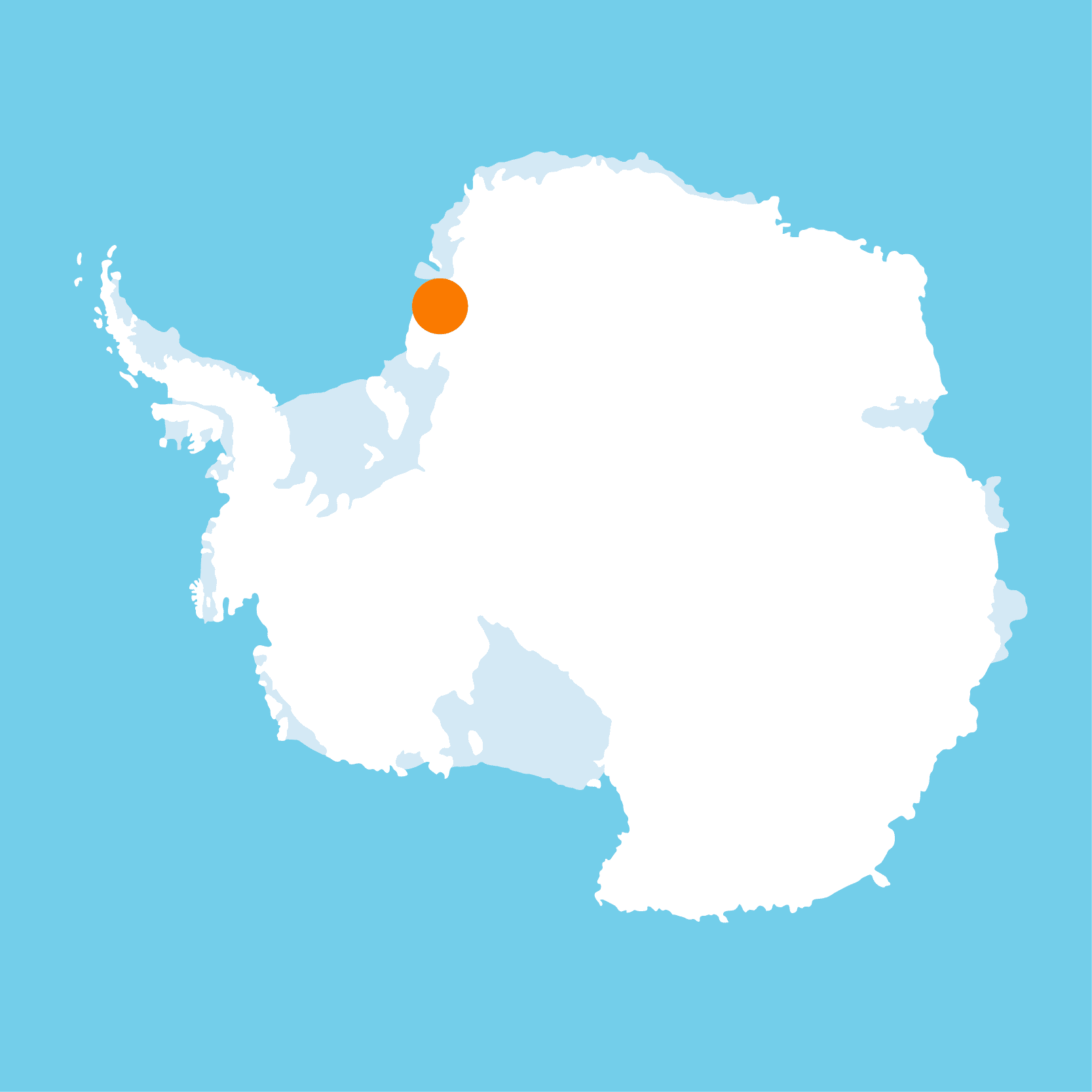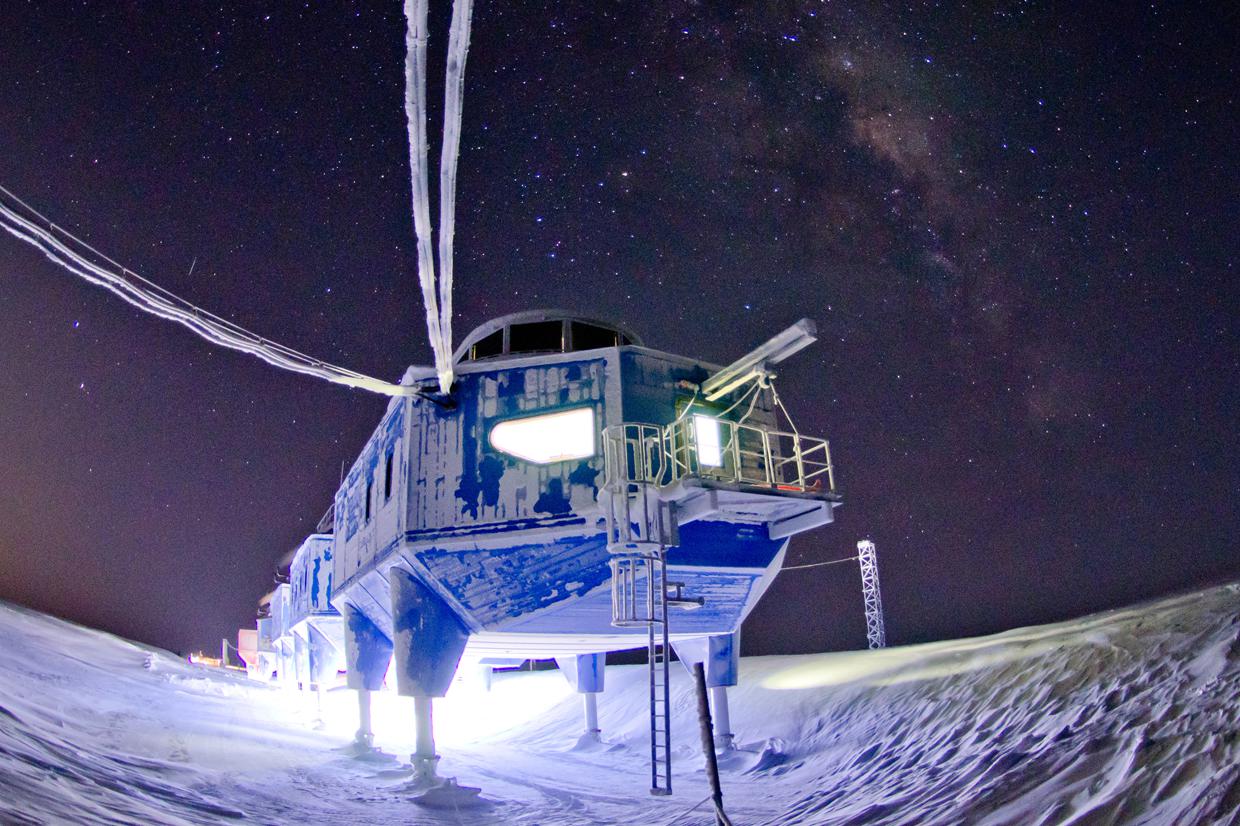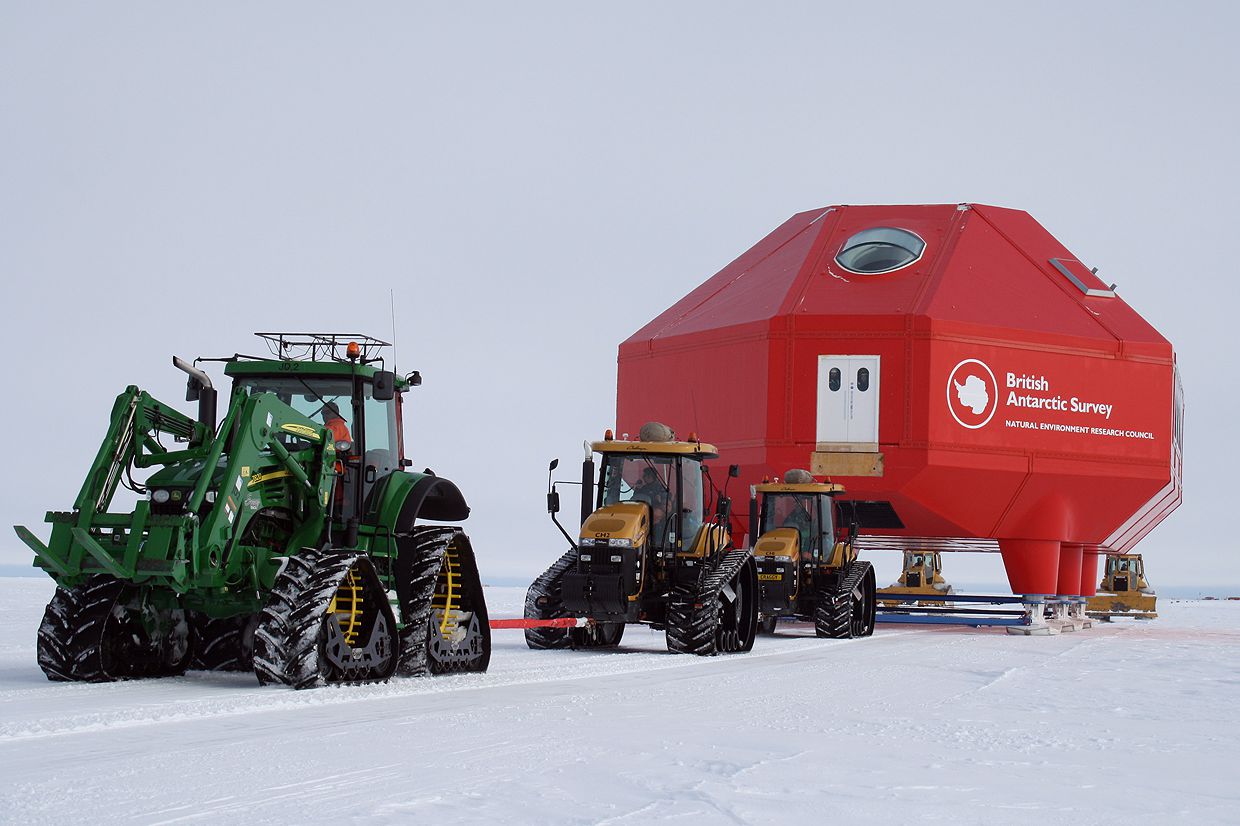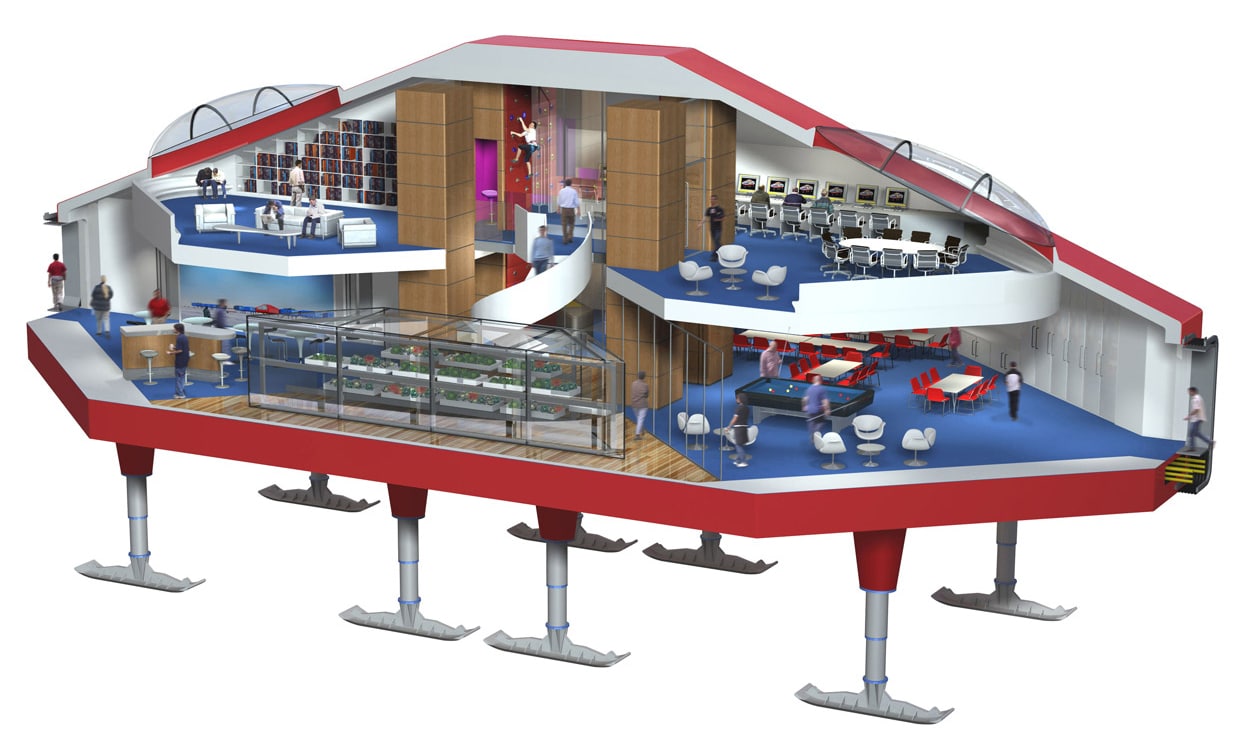
Generation next
The British Antarctic Survey’s latest state-of-the-art research station was officially opened in 2014, the sixth version of the British Halley research station. In order to make sure all the needs of the staff who live and work there were met, complex design plans had to be drawn up and all the necessary considerations taken into account.
Watch a video all about Halley VI Research Station
Now it’s your turn to be a team of designers, and your job is to design your own research station to match Halley’s scientific and living capabilities!
Situated on the Brunt Ice Shelf, Halley is the remotest of the British research stations. Halley was first built in 1956 and has since been rebuilt five times. During the summer months about 65 people live and work at Halley VI, but for nine months of the year, the research station is completely cut off from the outside world. Fifteen or so people brave it out during the winter when temperatures can fall to -50 degrees C and there is almost 24 hour darkness for three months.


Halley’s position on the Brunt Ice Shelf is problematic. The ice shelf is moving towards the ocean at several hundred metres a year, eventually breaking off into icebergs when it reaches the Weddell Sea. As Halley constantly moves closer and closer to the edge of the ice, a plan has been put in place to move it back to a safe location – can you guess what it is?
Design plans for Halley VI were both groundbreaking and futuristic. Thanks to special mechanical legs that act like skis, Halley VI can be carefully towed to different positions on the ice shelf, dramatically increasing its potential lifespan.


The central area of the research station is for recreation and relaxation. A platform links together detachable ‘modules’, some of the which provide accommodation all year round, with each big enough for eight bedrooms. Other modules are used for science laboratories, power generation and extra accommodation during the busy summer months.

Activity
Your design brief
You are working as a group of designers planning a brand new sister station for Halley VI. Produce a plan to develop your ideas. Include diagrams to illustrate and explain your plans.
Before you start:
-
Download ‘Living and working in Antarctica’ for more background information.
-
Think about what people who work in Antarctica want and need? (how they like to spend their free time, what helps to make living there during the winter months bearable … lighting, windows, even decoration etc)
-
Think carefully about the area for recreation and relaxation. Plan how you would make best use of this space to keep people happy.
-
How would you deal with the problem of the moving ice?
-
What new ideas do you have for relocating the station if it gets too close to the edge of the ice shelf?
-
The British Antarctic Survey make sure that Halley VI is as environmentally friendly as possible, and have state-of-the-art plans on how to use energy and water efficiently and how to dispose of waste.
-
What would you do? How would you make your research station a happier place to live and work during the long, dark winter months?
Which group in the class would win the contract?
Find out more information about building Halley VI from the people that designed it, Hugh Broughton Architects. They are also busy designing research stations in Antarctica for other countries, so you may get some ideas for your own designs. And check out this BBC website.







